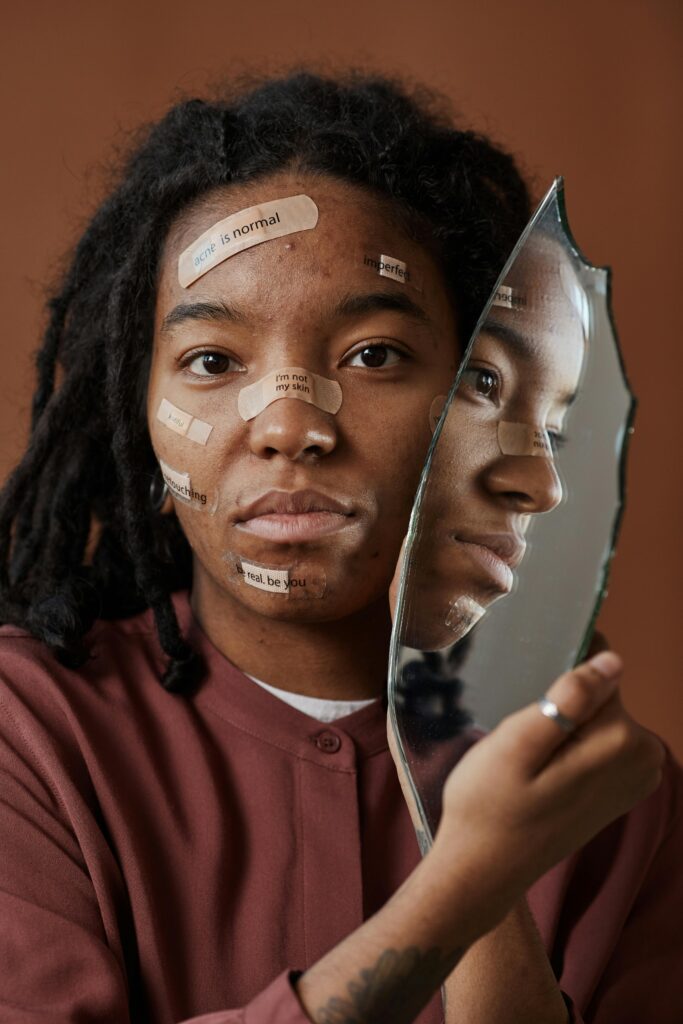Introduction:
Acne is a common skin condition that affects millions of people worldwide, and while it can manifest in various forms across the body, facial acne remains one of the most prevalent concerns. From occasional breakouts to persistent cystic acne, understanding the causes and types of facial acne is essential for effective management and treatment. In this blog, we’ll delve into the root causes of facial acne, explore its different types, and discuss proven solutions for clearer, healthier skin.
Causes of Facial Acne:
1. Excess Sebum Production:
Sebum, an oily substance produced by the sebaceous glands, plays a crucial role in maintaining skin hydration. However, excessive sebum production can lead to clogged pores, providing an ideal environment for acne-causing bacteria to thrive.
2. Clogged Pores:
When dead skin cells, excess oil, and environmental debris accumulate within the hair follicles, they can form plugs, resulting in the formation of whiteheads, blackheads, and eventually, inflammatory acne lesions.
3. Bacterial Overgrowth:
Propionibacterium acnes (P. acnes), a type of bacteria commonly found on the skin, can proliferate in clogged pores, leading to inflammation and the formation of pus-filled pimples.
4. Hormonal Imbalances:
Fluctuations in hormone levels, particularly during puberty, menstruation, pregnancy, and menopause, can trigger increased sebum production and contribute to the development of facial acne.
5. Genetics:
Genetic proneness can influence an individual’s susceptibility to acne. If one or both parents have a history of acne, their offspring may be more likely to develop the condition.
Types of Facial Acne:
1. Whiteheads (Closed):
These small, flesh-colored bumps occur when pores become clogged with oil and dead skin cells, trapping them beneath the surface of the skin.
2. Blackheads (Open):
Similar to whiteheads, blackheads form when pores become clogged, but in this case, the pore remains open, allowing the trapped debris to oxidize and turn black in color.
3. Papules:
Papules are small, red, inflamed bumps that develop when blocked pores become infected with bacteria, leading to localized inflammation and tenderness.
4. Pustules:
Pustules are larger, pus-filled lesions characterized by a white or yellow center surrounded by red, inflamed skin. They often develop from papules and can be painful to the touch.
5. Nodules and Cysts:
Severe forms of acne, nodules, and cysts are deep, painful, and often result in significant scarring if left untreated. These lesions develop deep within the skin and require medical intervention for effective management.
Effective Solutions for Facial Acne:
1. Gentle Cleansing:
Regularly washing the face with a mild, non-comedogenic cleanser helps remove excess oil, dirt, and impurities without stripping the skin’s natural moisture barrier.
2. Topical Treatments:
Over the counter (OTC) topical treatments containing ingredients such as benzoyl peroxide, salicylic acid, and retinoids can help unclog pores, reduce inflammation, and prevent acne breakouts.
3. Prescription Medications:
For moderate to severe acne, dermatologist-prescribed medications, including oral antibiotics, topical retinoids, and hormonal therapies, may be necessary to effectively manage the condition.
4. Lifestyle Modifications:
Adopting healthy lifestyle habits, such as eating a balanced diet, staying hydrated, managing stress levels, and avoiding excessive sun exposure, can support overall skin health and reduce the likelihood of acne flare-ups.
5. Professional Treatments:
Dermatological procedures such as chemical peels, microdermabrasion, laser therapy, and corticosteroid injections can help improve acne symptoms, reduce scarring, and promote smoother, clearer skin.
Conclusion:
Facial acne is a multifactorial skin condition influenced by a combination of genetic, hormonal, environmental, and lifestyle factors. By understanding the underlying causes and types of facial acne, individuals can take proactive steps to manage the condition effectively and achieve clearer, healthier skin. From gentle cleansing and topical treatments to prescription medications and professional interventions, a comprehensive approach to skincare can help alleviate acne symptoms and restore confidence in one’s complexion.
